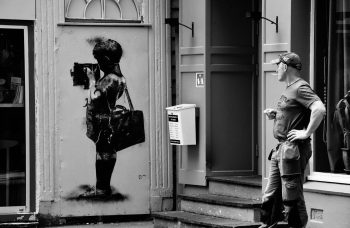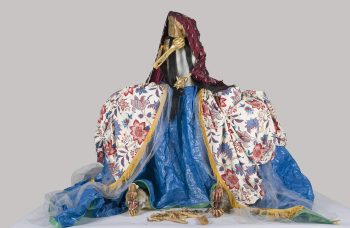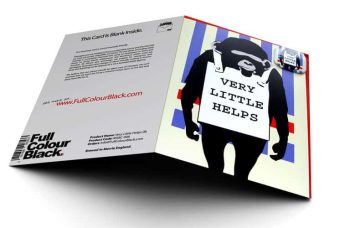Earlier this year in April, New York City made the choice to remove a statue honouring J. Marion Sims, the 19th century doctor sometimes called the ‘father of modern gynaecology.’ Sims made his mark on the medical world at the cost of enslaved black women who were experimented on, sometimes in death, without consent. The statue stood on its perch in Central Park for 80 years until it was relocated to Green-Wood Cemetery in Brooklyn following the protest of locals beginning as early as 2007. Soon, though, a new memorial, that sheds more light on Sims’ history will take its old spot. On October 5th, a meeting to determine whose statue will fill that Central Park space erupted in chaos leading to the selection of a work by Vinnie Bagwell.
During the October 5th meeting, a panel of judges voted for which artist’s work might chose as a replacement the statue of Sims. The open call to artists brought in submissions from some major art world names and the finalists included Kehinde Wiley and Wangechi Mutu, among others. In the end, the panel of seven voted four to three in favour of artist Simone Leigh’s submission. This choice, though, caused frustration amongst some members of the public who were at the meeting and felt their wants fell on deaf ears.

Though Leigh’s submission might have been the choice of some New Yorkers, the proposal by Yonkers-based a Bagwell, who was the only artist who submitted a proposal present at the panel vote, was favoured by a number of outspoken individuals. After the panel announced their choices, they were met with much pushback from some of the people who were present while members of the panel explained why they chose Leigh’s work over Bagwell’s in this instance. After the vote, Tom Finkelpearl, New York culture commissioner, expressed to those gathered at the meeting that the panel’s vote was merely an advisory action and not binding. On October 8th, the city announced that Leigh chose to withdraw her proposal and Bagwell’s submission was ultimately chosen for the project.
In a statement, Leigh said: ‘I greatly appreciate that my proposal was selected by the committee.’ She continued, ‘However, I am aware that there is significant community sentiment for another proposal […] Since this is a public monument in their neighborhood, I defer to them.’
‘A fundamental part of the problem [at the J. Marion Sims hearing],’ president of the Washington Street Advocacy Group Todd Fine told Hyperallergic, ‘was that the DCLA [Department of Cultural Affairs], on their own initiative, put contemporary-art-world-type, famous artists in the pool, who didn’t work as hard as Vinnie or even bother to show up [to the event].’ Based in New York, Bagwell is familiar with the area in which she works. She began working in sculpture nearly 30 years ago and, as a self-proclaimed ‘untutored artist,’ she has a number of public works already in her body of work, including one of Ella Fitzgerald in Yonkers. Fine went on to question the process by which public works are selected and whether that process should be re-examined as more works, including monuments supported through the SheBuiltNYC initiative, are soon to come.
Her proposal for the Central Park space replaces Sims with an 18-foot tall bronze statue titled Victory Over Sims. The figure is Bagwell’s rendition of a victory angel holding an eternal flame in one hand and the staff of Asclepius, a symbol for the medical field, in the other. At the bottom of her skirt are reliefs of the faces of black women, presumably Sims’ victims. ‘In broad daylight, a majestic angel shall be seen by progressives as a beacon in increasingly populist times,’ said Bagwell of her proposal. ‘Viewers [sic] minds shall be quickened and their spirits lifted by her presence.’





